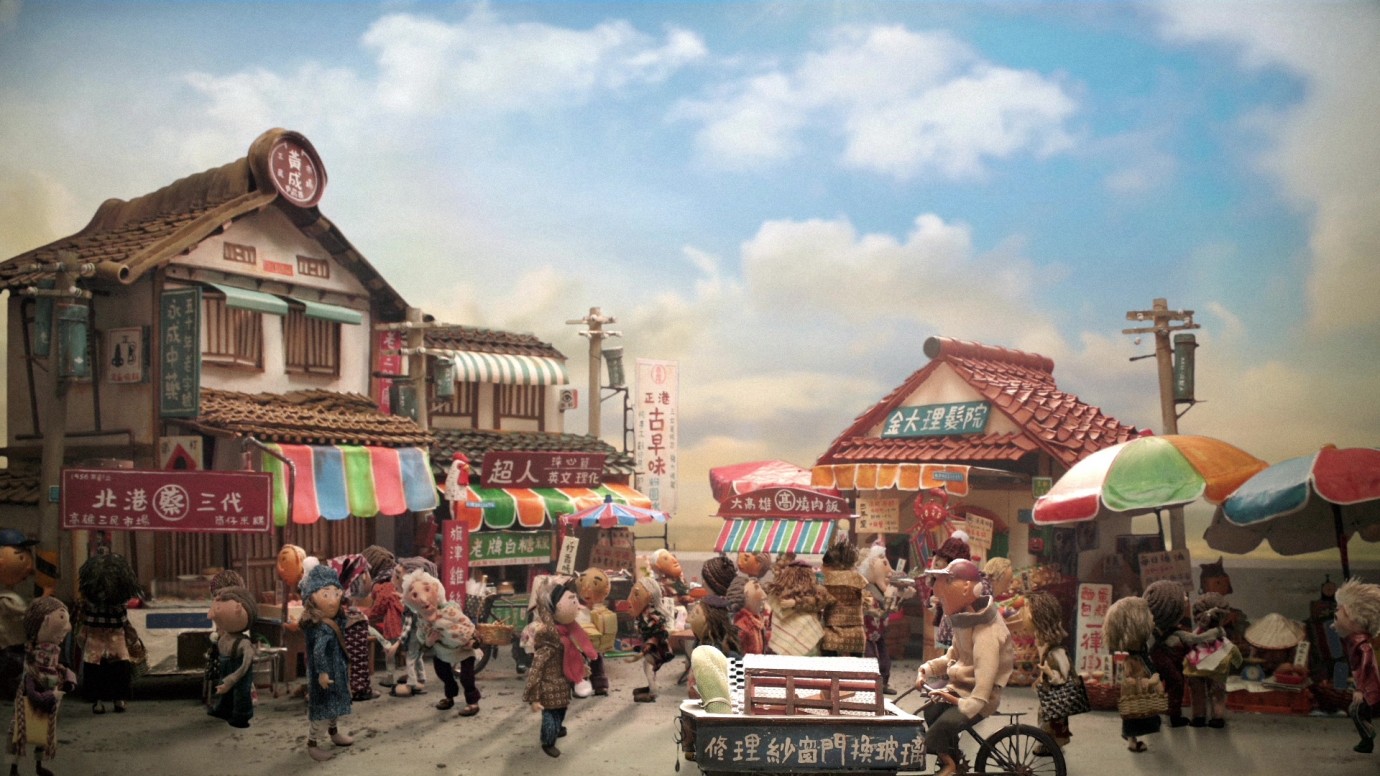by Brian Hioe
語言:
English
Photo Credit: Where Am I Going?/Film Still
This is a No Man is an Island film review written in collaboration with Cinema Escapist. Keep an eye out for more!
The following Taiwanese animated shorts for children were reviewed as part of the “Formosa Fantastica” section of the Neuchâtel International Fantastic Film Festival in Switzerland. The film festival will be held from July 2nd to July 10th in a hybrid format, with simultaneously live-streamed events in Neuchâtel and Taipei.
AS USUAL is an intriguing depiction of everyday life in Taiwan, managing to be rather evocative despite its seven-minute runtime.
A short animation without any particular plot, As Usual takes place in a traditional market, showing market vendors delivering goods, setting up shop, and cutting up produce while scooters whizz by. Humans are, for the most part, depicted as transparent outlines in the course of this, lending them a ghostly air.
While the movements of the characters come off as a bit choppy, the film really benefits from its sound design, capturing perfectly the ambience of being in a traditional market in the midst of preparing for peak hours. Backgrounds are drawn beautifully, vividly evoking the colors and shades of traditional markets in a manner that is immediately recognizable, yet ubiquitous—this could be anywhere in Taiwan.
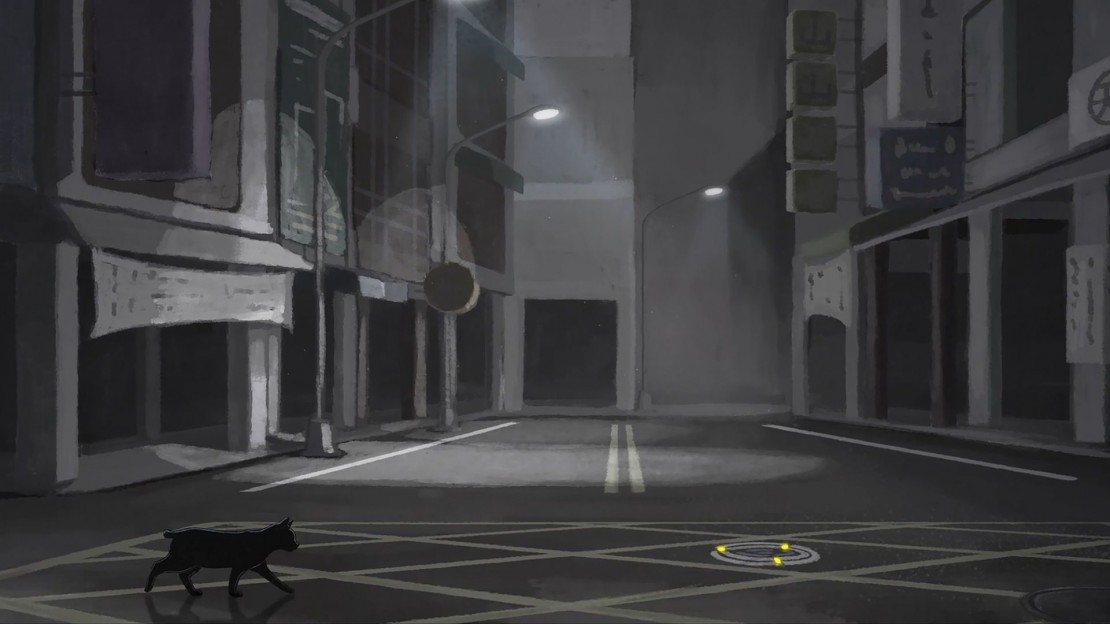
Film Still
Halfway through the film, the focus shifts to night market cats. Again, the animation is minimalist—all cats are drawn as black cats and their interactions with each other can also be a bit choppy. Transitioning focus away from human subjects to the cats seems to suggest that there is another, non-human aspect to the traditional market, with the viewer’s attention redirected to what takes place in the shadows of the traditional market.
As Usual, then, attempts to be an easily identifiable slice of the everyday in Taiwan. Although the film may not offer any special insights into everyday life, it makes for an enjoyable look into rather ubiquitous sights and sounds for residents of Taiwan.
LONG LAND is a brief but effective six-minute animated short, telling the story of an aging lighthouse keeper on an island. Cut off from the outside world and living alone, he can only live vicariously through watching the boats from the shore of his island or by reading the newspaper.
There is not too much to Long Land’s story, with the protagonist briefly drawn out of his isolation by an injured man in need of aid during a storm, and no particular resolution except for the implication that new friends he made during that incident come to visit again. But Long Land gets the plot across clearly, conveying feeling through the use of soft piano music that goes well with the hand-drawn images.
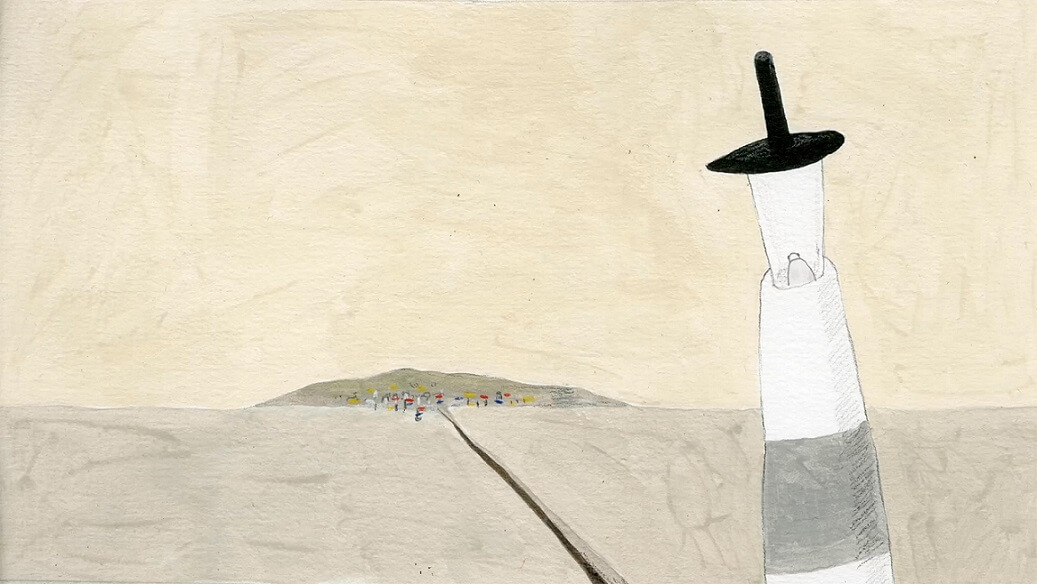
Film Still
Animated motion in the film is always brief, with frequent shifts between scenes. While likely a product of budgetary considerations, this does not impede the film. Some moments are rather creative, such as quickly cutting from scenes of the protagonist reading a newspaper to scenes of individuals frolicking elsewhere, or a bandage gauge that the protagonist unwraps turning into a stream of golden beer.
In this sense, Long Land does not stand out for any particular element, but it is a competent work that tells a simple story in a creative manner.
DAISY—a claymation film that is ten minutes long—begins with the idyllic, then proceeds to the apocalyptic. A young girl is cared for by a group of robots in a mansion. This includes the protagonist, a metal robot with a top hat and a scarf, a robot maid, and a robot butler.
The tone shifts, however, with an air bombing of the mansion. The protagonist wakes up later, disoriented, with no recollection of what happened to the girl after the bombing. Finding the broken body of one of his fellow robots, he reads the dead robot’s memory card, then makes his way into the mansion, where he stumbles across some of the other robots. Evidently, some time has passed since the bombing took place. The story takes a turn for the dark, when he begins forcibly removing the memory cards of the other robots to try and search for clues about what happened to the girl.
Daisy effectively manages the tonal shift that occurs one-third of the way through the film. The short film’s worldbuilding is also well-done, in evoking the pastoral idyll of the mansion before the bombings take place. The protagonist comes off as slightly morally ambiguous, given his shift from a protective nature, to being willing to attack his fellow robots to search for the girl.
However, Daisy is perhaps best viewed for its technical accomplishments, rather than its story. Apart from skilled use of claymation, some of the visual effects of the story are executed innovatively, such as a scene of the protagonist’s scarf unraveling while he descends a set of stairs—the unraveling scarf is shot using real cloth and, as he descends the set of stairs, the scarf’s dissolution seems to mark something like loss of innocence—even as the golden thread is also evocative of hope.
WHERE AM I GOING? is a masterful film, in almost all aspects.
The short stop motion film, which is fifteen minutes long and uses puppets, follows an old man over the course of a single day. The man lives in a building slated for demolition, located adjacent to train tracks. He makes a living as a repairman of mesh screens and glass windows, pushing a cart around town as he does so.
The film points to the old man as someone who is alienated from society, living on the margins of society. Soon, he will be driven out of his home. He lives at some distance from his children, who have since grown up and have children of their own, and he is further estranged from his grandchildren.
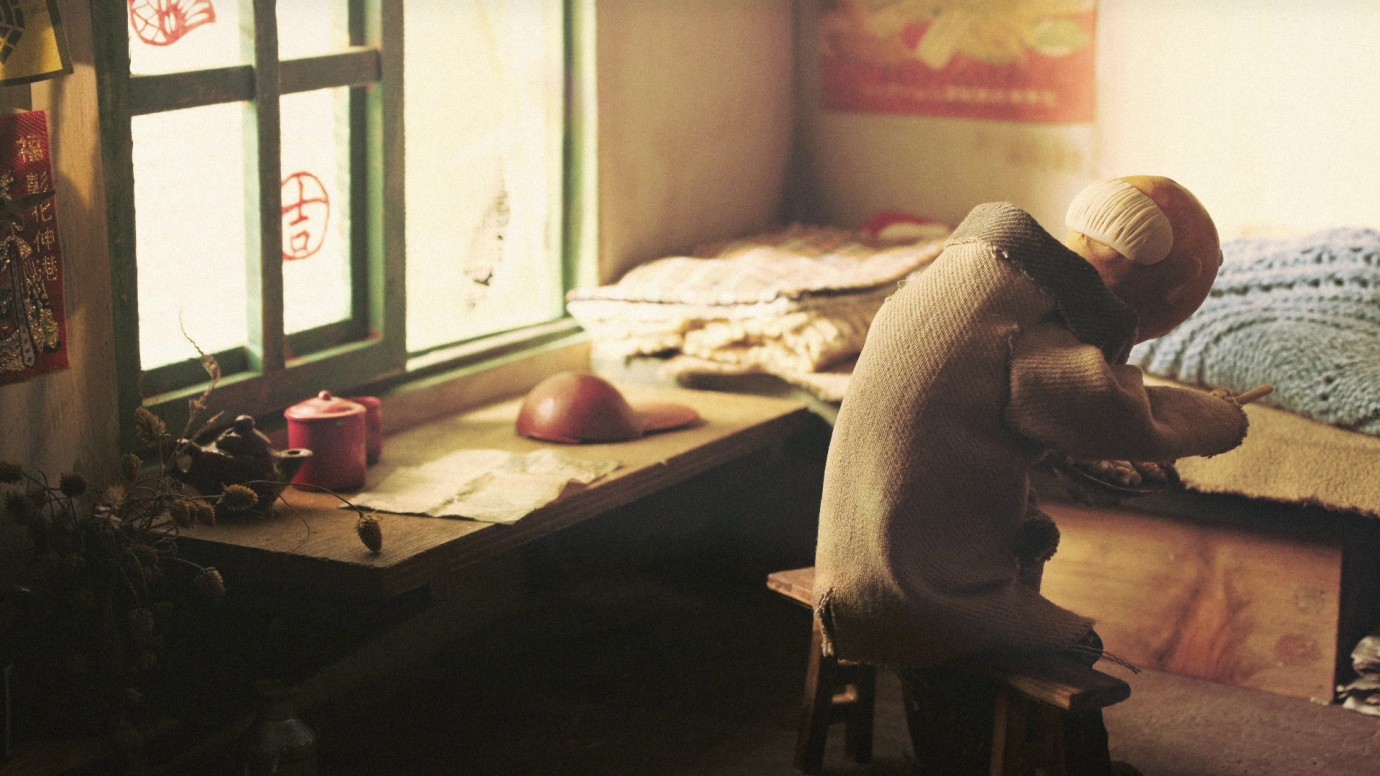
Film Still
Though he makes a living repairing mesh screens and glass windows, as with the individuals that still carry on this trade in real life, he has few customers. After a day of pushing his cart around town, he finally only finds a mesh screen in the garbage—this is the only screen he has to fix. An evocative moment is when a plastic bag blown by the wind rolls under the wheels of his cart, suggesting that he, too, may have been thrown under the bus by society.
The old man is increasingly unclear and muddled about the world around him, as presented in a series of imaginative hallucinations. In one part of the film, he sees a traffic light menacingly come to life in front of him, in a scene also illustrative of how he is someone caught unaware by the buzz of the world around him. In another part of the film, he sees a strange creature playing with birds in a bustling market and is unsure of the reality of what he sees.
In this sense, the film perhaps points to disconnect from the present of many elderly individuals, or how they may perceive the world around them as surreal. The film touches on several contemporary social issues, including the forced evictions of the elderly from homes deemed to be dangers to public infrastructure or for the sake of commercial development, and that of Taiwan’s growing elderly population, with Taiwan on the verge of becoming a super-aged society.
Finally, in the last part of the film, the old man arrives at a temple and has an encounter with the temple deity that may or may not be real. In a wonderful moment, this includes the deity waving a finger puppet at the man, adding a layer of metafiction to a stop motion film using puppets. Despite what could be very easily read as bleak subject matter, the film maintains a whimsical tone, with a touch of the fantastical, much in the manner of Wes Anderson’s claymation films.
But Where Am I Going? truly shines in its attention to detail. Apart from the creative design of the puppets and the setting, each scene is carefully thought out with regards to its symbolism, and the film is carefully framed. In this, the film accomplishes quite a lot despite scarce dialogue apart from a phone call that the protagonist receives at the start of the film.
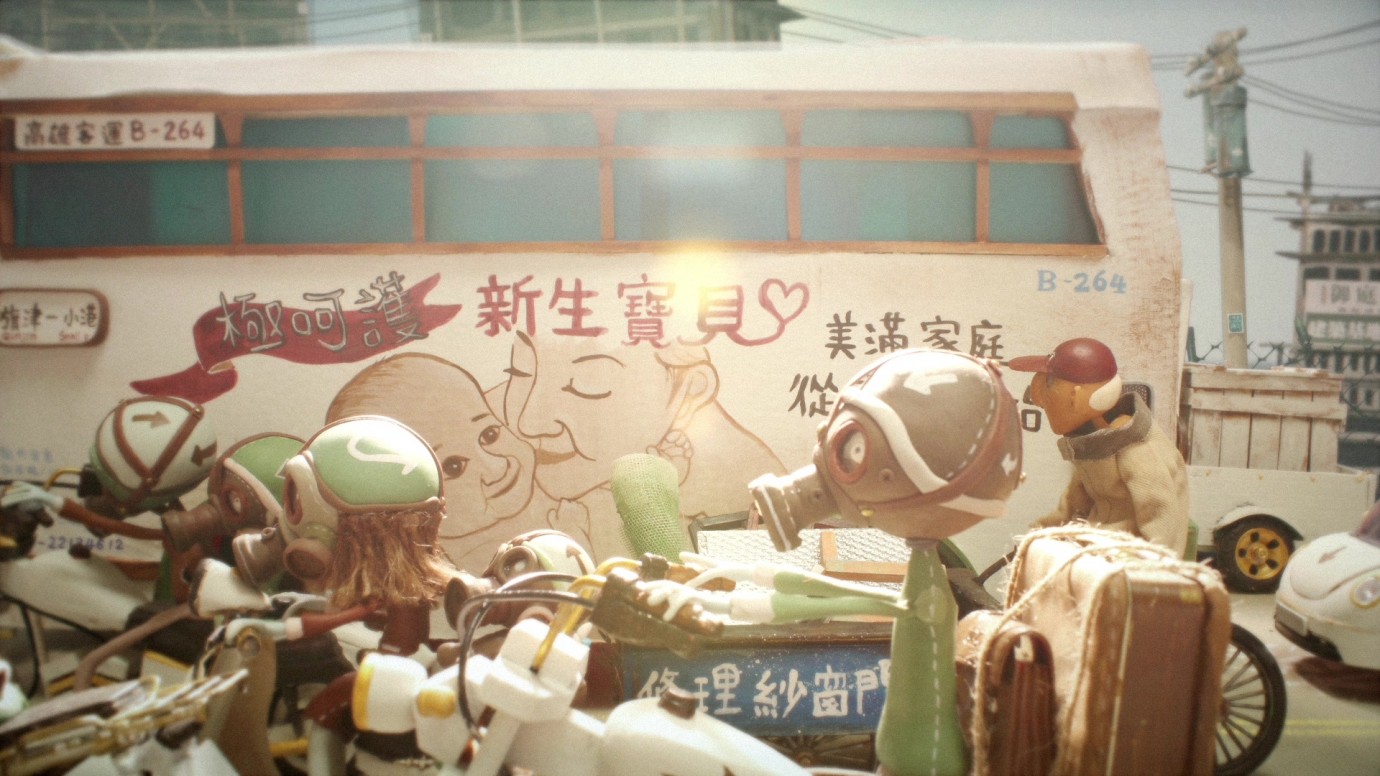
Film Still
The puppets are realistic in attention to detail; for example, the old man wears a Tianho Temple cap, much as many old men in Taiwan wear hats from temples. But it also can be exquisitely creative. The design of the goddess that appears at the close of the film is a triumph. She comes off as a larger-than-life figure, particularly with the inventive pipe she smokes that burns incense sticks.
The town seen in the background of the film is charmingly beautiful, as is the protagonist’s home, next to train tracks. This, too, is something that is both realistic, in that there really are houses located next to train tracks in Taiwan, which oftentimes are deemed to be illegal structures today. However, the home could easily be taken from a Studio Ghibli movie.
Where Am I Going? is a film which is not to be missed. If there has not been as much attention to Taiwanese stop motion films compared to traditionally animated films in past years, Where Am I Going? makes a strong case that more attention should be paid to such experimental works.
A FIVE-MINUTE animated short, Wander in the Dark starts off strong, but veers off course midway through the course.
Starting off with an epigraph from Natsume Soseki’s famous novel, I Am A Cat, Wander in the Dark follows a cat wandering through an urban modernist environment. This is a world of drab grays, seemingly populated by few others apart from office workers and cars. Scenes of the city in flux, with skyscrapers growing taller or shrinking, are particularly effective, and are illustrated beautifully.
The opening implication, then, seems to be that cats exist on the peripheries of urban modernity, in its shadows. The animation of the cat’s motion is particularly lifelike.
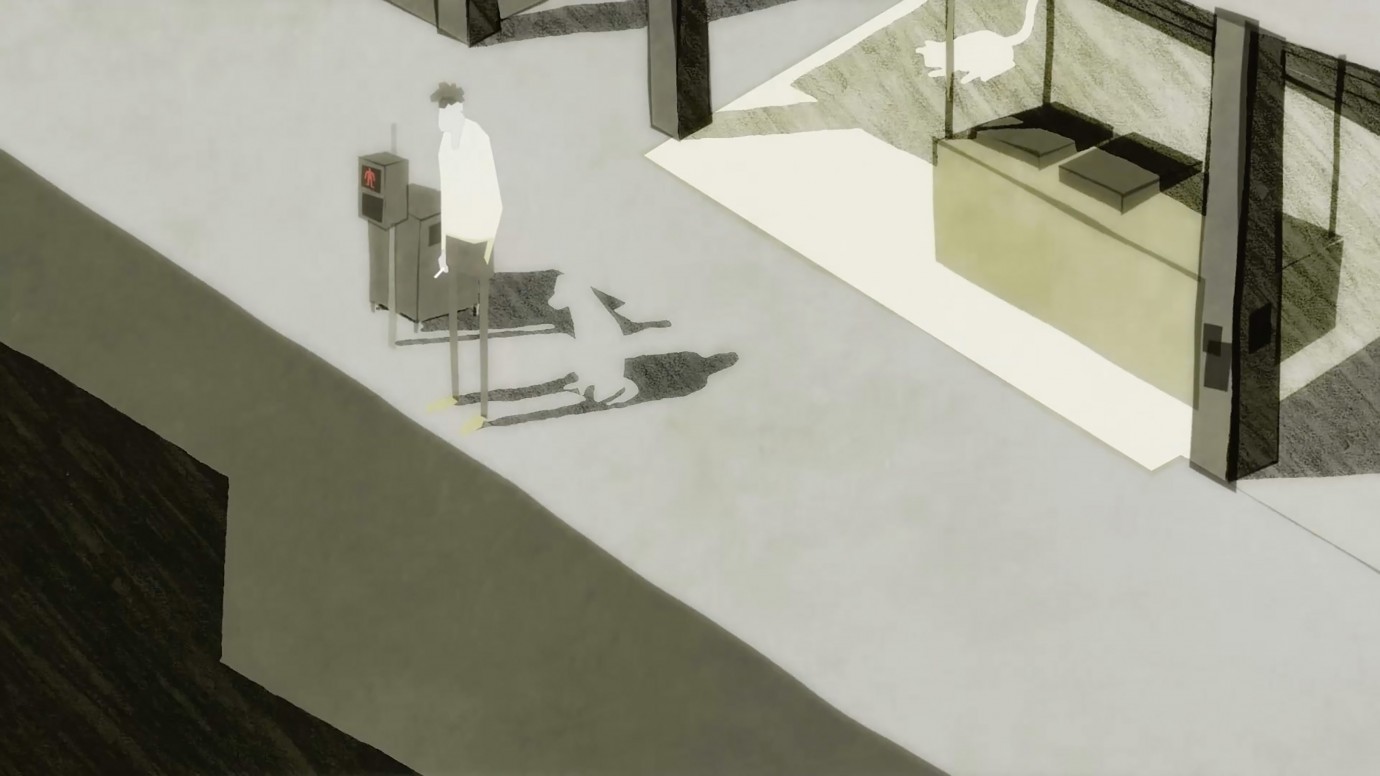
Film Still
The short starts to get off course, however, in part because of the music. The music gives too much of a progressive motion to the short, when an atmospheric, reflective tone would have been better—as making for a greater fit with the visuals.
But by the film’s end, the story has turned into a somewhat sappy one, ending with the protagonist cat’s adoption. This takes a turn for the bizarre when the cat suddenly turns into a human child after it is picked up by its new owner—one wonders if this is a comment on the substitution of pets, referred to colloquially in Taiwan as “fur children” in an age of declining birth rates. This one scene alone sharply undercuts the virtues of the rest of the film, inexplicable as it is.
Wander in the Dark is a brilliantly animated short. But it is only the short’s skillful animation that carries it. Other elements, such as the plot and music, are unfortunately lacking. Nevertheless, on the merits of its animation alone, Wander in the Dark is still a praiseworthy effort.
THE WEATHER IS LOVELY, a Taiwanese-Chinese co-production, manages to have all the fundamentals of a good story in its fifteen minutes of runtime. Likewise, the work is executed with a high degree of competence, hitting most beats. Where the work suffers is that it is not especially original.
A mysterious boy—whose design is a clear homage to the protagonist of Katsuhiro Otomo’s Steamboy—drops a mechanical sphere with the ability to release steam. This, too, is an element directly adapted from Steamboy.
The sphere falls in the home of the film’s second protagonist, a young girl with an interest in scientific experimentation. She begins experimenting with the sphere and discovers its ability to release clouds and generate cloud-related weather phenomena, while the boy secretly watches furtively from outside with his sidekick, some kind of cloud creature. He becomes increasingly smitten with the girl.
The two finally meet when the girl accidentally knocks the sphere into her fish tank, causing it to suddenly turn into a malevolent, dark storm cloud creature that fires lightning at the protagonists, forcing them to flee. The creature gradually increases in size, threatening the surrounding area, forcing the duo into a confrontation.
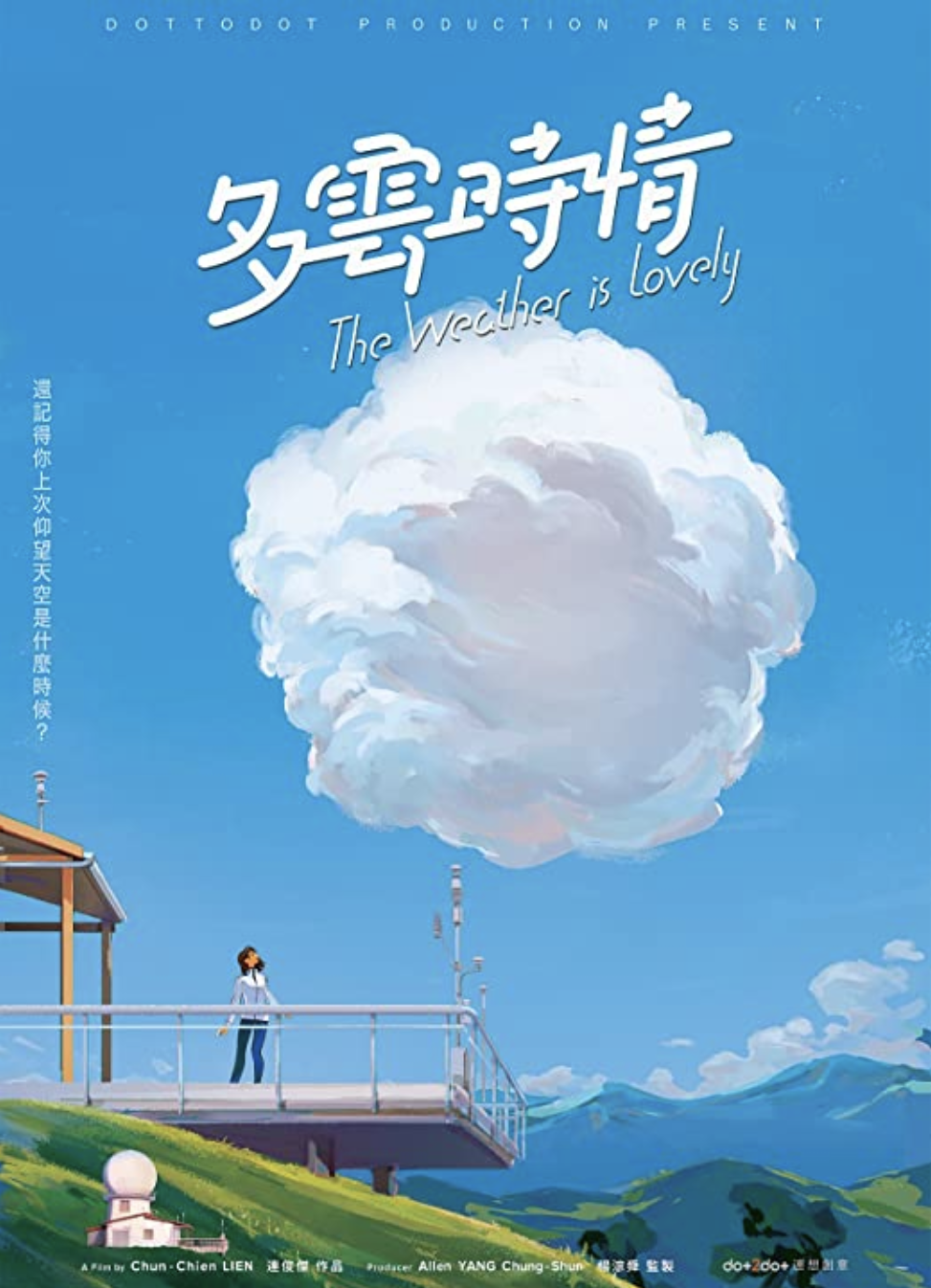
Film Poster
It is never explained as to the origins of the boy and his mysterious weather technology. This does not prove particularly detrimental to the plot, which focuses more on what happens after the girl finds the sphere. What is odd, however, is that the boy’s cloud sidekick drops out of the film at some point, with little follow-up. The character could easily have been removed from the film and little about the plot would change, seeing as the boy never interacts with him too much.
The short is animated beautifully, though the character designs are not too original. As mentioned, the design of the boy is meant as homage, while the girl has a rather cookie-cutter anime-style design.
The film shines more in the design of the background surroundings, such as that of the girl’s home, or moments of visual spectacle from the dark cloud creature. Again, this is quite technically accomplished, but is not particularly unique.
The Weather is Lovely makes for entertaining light fare for children, sufficient to fill up fifteen minutes of runtime. But though well animated, there is not too much else to the film, whereas the film could have really shone with more creative visual design and storytelling.


